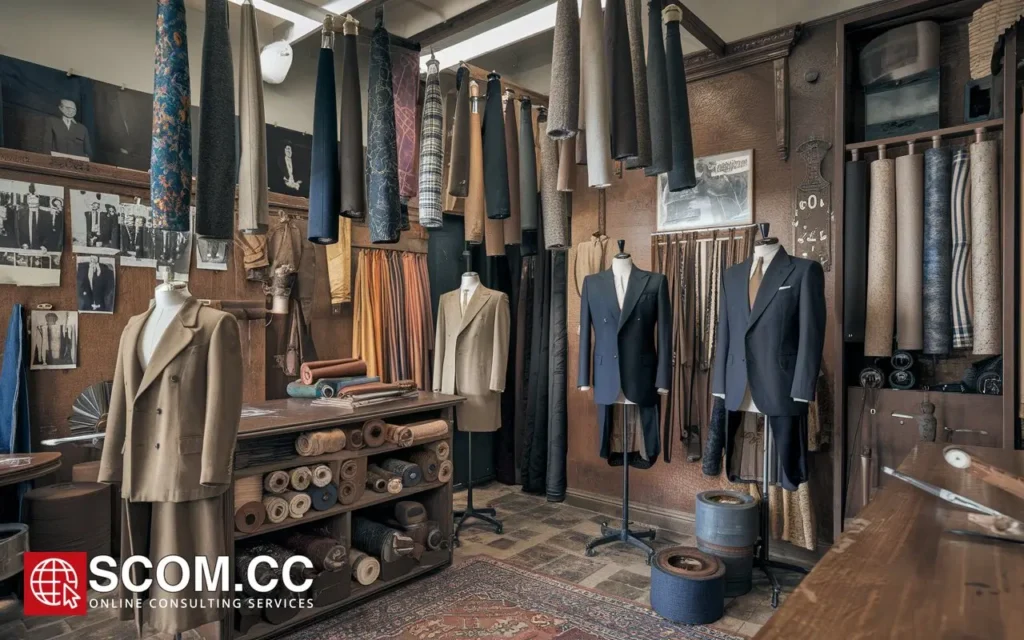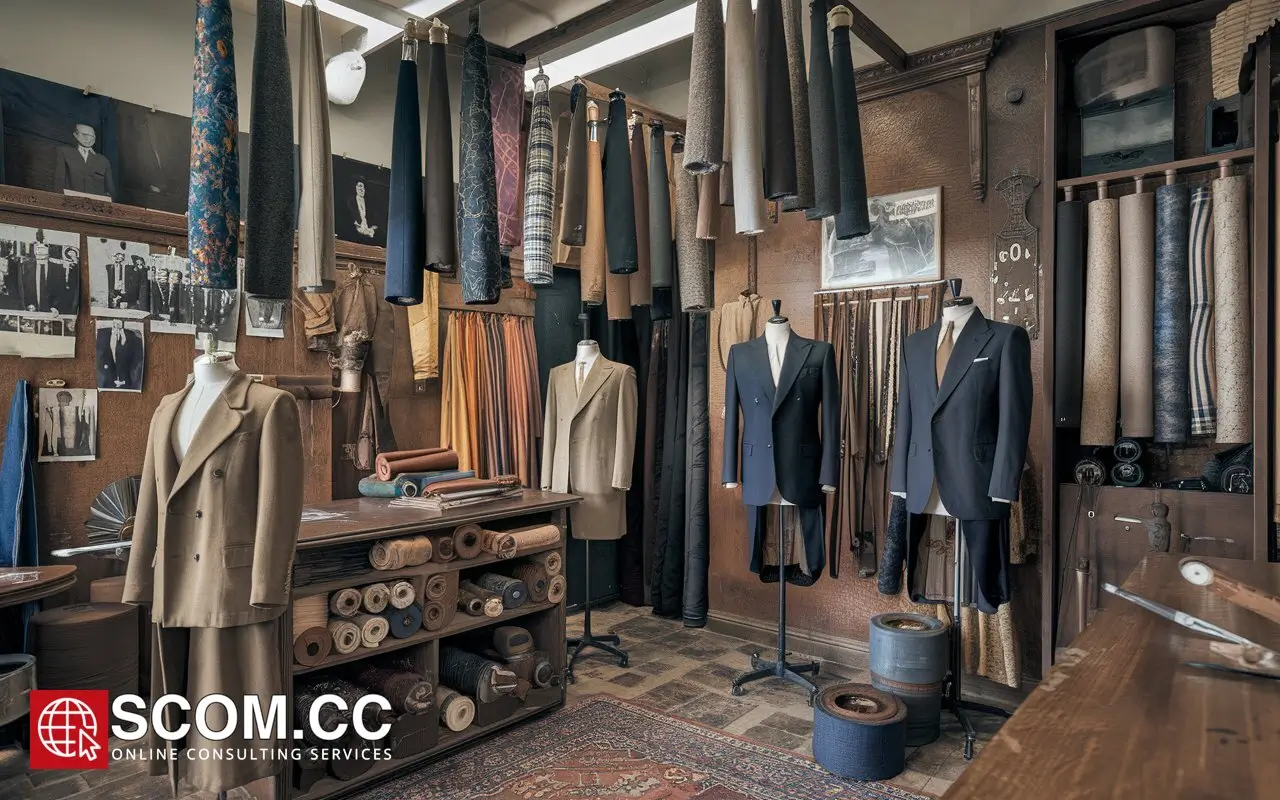How Did Tailoring Techniques Change During the Industrial Revolution?

- How Did Tailoring Techniques Change During the Industrial Revolution?
- The Advent of the Sewing Machine
- Standardization of Sizes and Patterns
- Advancements in Textile Production
- The Role of Tailors in the Industrial Age
- The Emergence of Fashion Houses and Department Stores
- Conclusion: The Lasting Impact of the Industrial Revolution on Tailoring
- Summary Table of Tailoring Changes During the Industrial Revolution
-
FAQ
- What was the most significant invention in tailoring during the Industrial Revolution?
- How did standardized patterns change tailoring?
- What role did textile advancements play in tailoring?
- How did the Industrial Revolution affect bespoke tailoring?
- What changes occurred in retail models during the Industrial Revolution?
- How did the division of labor impact the tailoring industry?
- What lasting impact did the Industrial Revolution have on modern tailoring?
How Did Tailoring Techniques Change During the Industrial Revolution?
Introduction: Tailoring Meets the Industrial Revolution
The Industrial Revolution, spanning from the late 18th century to the early 19th century, marked a period of profound transformation in many industries, and tailoring was no exception. This era of rapid industrialization introduced new technologies and processes that dramatically changed the traditional art of tailoring. As machinery replaced manual labor, the tailoring industry saw a shift from handcraftsmanship to mechanized production, forever altering the way garments were made.
The Advent of the Sewing Machine
From Hand-Stitching to Mechanized Sewing
One of the most significant innovations that revolutionized tailoring during the Industrial Revolution was the invention of the sewing machine. Prior to its introduction, all garments were meticulously hand-sewn, a time-consuming and labor-intensive process that required exceptional skill.
Invention and Impact: The first functional sewing machine was invented by Elias Howe in 1846, but it was Isaac Singer who made the machine commercially successful. This invention allowed for quicker, more consistent stitching, reducing the time it took to produce a garment. Tailors could now focus on more intricate design elements while the machine handled the repetitive sewing tasks.
Impact on Tailoring: The sewing machine enabled the mass production of clothing, leading to the rise of ready-to-wear fashion. Tailoring shops became more efficient, producing garments at a fraction of the time it previously required. This mechanization also made tailoring more accessible to a broader audience, as the cost of labor decreased, and clothing became more affordable.
Standardization of Sizes and Patterns
From Bespoke to Ready-to-Wear
Before the Industrial Revolution, tailoring was predominantly a bespoke craft, meaning that garments were made-to-measure for individual clients. Each piece was unique, crafted to fit the specific measurements of the wearer. However, with the rise of industrialization, the need for standardized sizes became apparent.
Introduction of Standardized Patterns: The growth of ready-to-wear clothing necessitated the creation of standardized sizes. This innovation allowed tailors and manufacturers to produce clothing in bulk, using pre-made patterns that could fit a range of body types. Grading techniques were developed to adjust patterns for different sizes, making the production process more efficient.
Impact on the Tailoring Trade: While bespoke tailoring remained a prestigious service, the standardization of sizes democratized fashion, making stylish and well-fitting garments more accessible to the general public. This shift also led to the rise of department stores and catalog shopping, where customers could purchase ready-made clothing without visiting a tailor.
Advancements in Textile Production
The Transformation of Fabric Manufacturing
The Industrial Revolution brought about significant advancements in textile production, which had a direct impact on tailoring techniques. Innovations such as the spinning jenny, power loom, and cotton gin revolutionized the way fabrics were produced, making textiles more affordable and varied.
Mass Production of Fabrics: These innovations allowed for the mass production of fabrics at unprecedented speeds. Tailors now had access to a wider variety of materials, including cotton, wool, and synthetic fabrics. This abundance of fabric meant that clothing could be produced more rapidly and at lower costs.
Impact on Tailoring: The increased availability of textiles led to the rise of fashion trends, as tailors could experiment with new materials and designs. The affordability of fabrics also contributed to the expansion of the ready-to-wear market, as manufacturers could produce garments in large quantities without the need for costly materials.
The Role of Tailors in the Industrial Age
Adapting to a Changing Industry
As the Industrial Revolution progressed, tailors had to adapt to the rapidly changing industry. While some tailors embraced the new technologies and methods, others resisted, clinging to the traditional methods of bespoke tailoring.
Specialization and Division of Labor: The rise of mechanized production led to a division of labor within the tailoring trade. Instead of one tailor crafting an entire garment, the production process was broken down into specialized tasks. For example, one worker might focus on cutting fabric, another on stitching seams, and another on finishing details like buttons and trims. This specialization increased efficiency but also altered the nature of the craft.
Survival of Bespoke Tailoring: Despite the changes brought about by industrialization, bespoke tailoring did not disappear. Instead, it became a luxury service, catering to those who could afford custom-made garments. High-end tailors maintained their status by offering superior craftsmanship and personalized service, distinguishing themselves from mass-produced clothing.
The Emergence of Fashion Houses and Department Stores
New Retail Models and Tailoring
The Industrial Revolution also gave rise to new retail models, such as department stores and fashion houses. These establishments played a significant role in shaping the future of tailoring by offering ready-made garments to a wide audience.
Department Stores: Department stores, which first appeared in the 19th century, revolutionized the way people shopped for clothing. These stores offered a wide range of products, including ready-to-wear garments, and provided an alternative to traditional tailor shops. Consumers could now purchase clothing off the rack, saving time and money.
Fashion Houses: The emergence of fashion houses, particularly in Paris, introduced a new level of creativity and innovation to tailoring. Designers like Charles Frederick Worth established haute couture, blending traditional tailoring with artistic design. These fashion houses set trends and dictated the direction of fashion, influencing both bespoke and ready-to-wear tailoring.
Conclusion: The Lasting Impact of the Industrial Revolution on Tailoring
The Industrial Revolution was a pivotal period in the history of tailoring, transforming it from a purely artisanal craft to a more industrialized and accessible industry. The innovations in machinery, textile production, and retail models reshaped the way garments were made and sold, leading to the rise of ready-to-wear fashion and the standardization of sizes. While bespoke tailoring continued to thrive as a luxury service, the Industrial Revolution democratized fashion, making stylish clothing available to a wider audience. The changes that occurred during this period laid the foundation for modern tailoring and the fashion industry as we know it today.
Summary Table of Tailoring Changes During the Industrial Revolution
| Aspect | Pre-Industrial Techniques | Post-Industrial Revolution Techniques | Impact on Tailoring |
|---|---|---|---|
| Sewing Methods | Hand-stitching | Mechanized sewing using the sewing machine | Faster production, more consistent stitching |
| Garment Production | Bespoke, made-to-measure clothing | Rise of ready-to-wear fashion with standardized sizes | Mass production, clothing became more affordable |
| Pattern Creation | Unique patterns for each individual | Standardized patterns for mass production | Clothing fit a broader range of body types |
| Textile Manufacturing | Limited, labor-intensive textile production | Industrialized production with inventions like the spinning jenny | Increased fabric availability, lower costs |
| Tailoring Process | Tailors crafted entire garments by hand | Division of labor with specialized tasks in garment production | Increased efficiency but reduced individual craftsmanship |
| Retail Models | Small tailor shops | Department stores and fashion houses | Wider accessibility to fashionable clothing |
| Bespoke Tailoring | Predominant method for all clothing | Luxury service for the elite | Bespoke tailoring became a niche for high-end, personalized garments |
FAQ
What was the most significant invention in tailoring during the Industrial Revolution?
The most significant invention was the sewing machine, which drastically improved the speed and consistency of garment production.
How did standardized patterns change tailoring?
Standardized patterns allowed tailors and manufacturers to produce clothing in bulk, making fashion more accessible to the general public by offering clothing in predefined sizes.
What role did textile advancements play in tailoring?
Advancements in textile manufacturing, such as the spinning jenny and power loom, led to mass production of fabrics, which made materials more affordable and available to tailors.
How did the Industrial Revolution affect bespoke tailoring?
Bespoke tailoring became a luxury service after the Industrial Revolution, catering to those who could afford custom-made garments, as ready-to-wear clothing became more prevalent.
What changes occurred in retail models during the Industrial Revolution?
The rise of department stores and fashion houses transformed retail, making ready-made garments more accessible and popular, reducing the reliance on traditional tailors.
How did the division of labor impact the tailoring industry?
The division of labor in garment production increased efficiency but also reduced the role of individual craftsmanship, as tasks became more specialized and mechanized.
What lasting impact did the Industrial Revolution have on modern tailoring?
The Industrial Revolution laid the foundation for modern tailoring by introducing mass production, standardization, and new retail models, all of which continue to influence the fashion industry today.

To explore more about tailoring, visit our Blog of Tailoring. If you have any questions or need assistance, go to our contact page. Additionally, you can find more information about tailoring and consulting at this tailoring and consulting portal.

Leave a Reply